THE ETERNAL WOE OF SREBRENICA
Povezani članci

Every genocide is followed by denial.
The mass graves are dug up and hidden.[1]
Convention on the Prevention and
Punishment of Genocide, 1948.
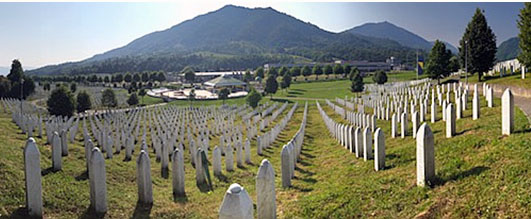
Silent witnesses of Genocide, cannot be annulled by any kind of ”VETO”
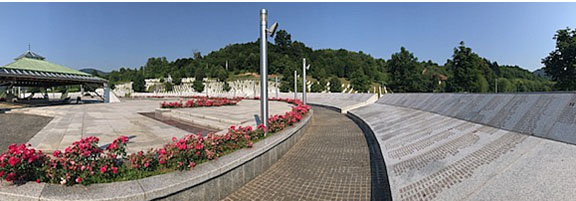
The numbers, the names, the years of birth …the names.. the names…the names…
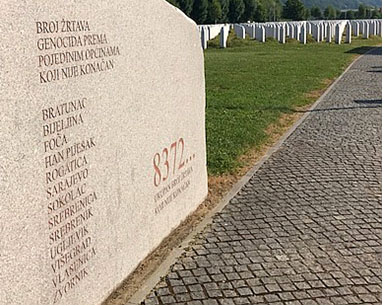
8372…
The captured Bosniaks, men and boys between 12 and 77 years, were separated from the women, the children and the elderly…
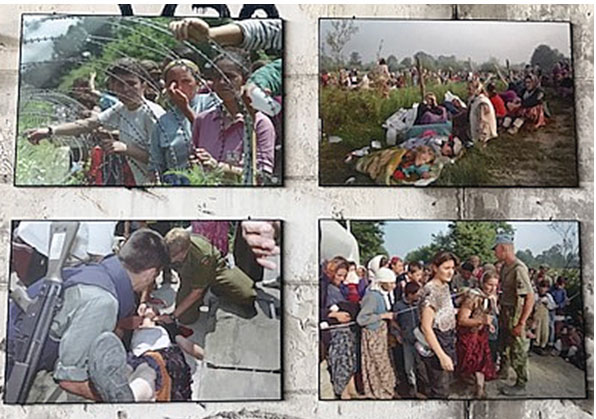
Photos-Srebrenica Memorial Room, Potočari
And…
found later, as integral bodies or in fragments, in the numerous massive graves…but not everyone has been found yet.
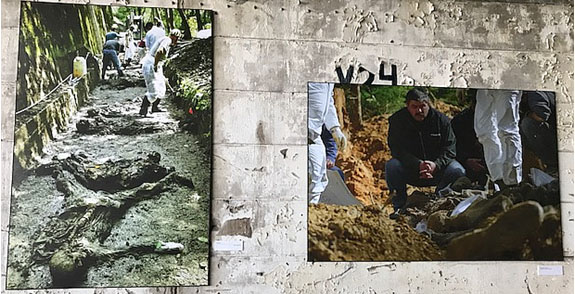
Photos-Srebrenica Memorial Room, Potočari
Amor Mašović, a member of the Board of Directors of the BiH Missing Persons Institute (MPI):
“The skeletal remains of a young man from Srebrenica were found 30 kilometres apart between one mass grave to another. Within one of the mass graves, again the fragments of that same skeleton were located in one part of the grave, let us say in the southwestern part of the grave, other fragments in the middle part, and more fragments in the northern part – this is something that has significantly slowed down and I’m afraid, in fact I am convinced, completely prevented the identification of some of the victims – primarily from Srebrenica.”[2] (Radio Free Europe “In Bosnia and Herzegovina found more than 5,000 mass graves”, 9/5/2010)
”Here we are, on July 11th 1995 in Serb Srebrenica. Just before a great Serb holy day, we give this town to the Serb Nation. Finally the time has come. After UPRISING AGAINST THE DAHIJE [3] we took revenge on the Turks”.[4]
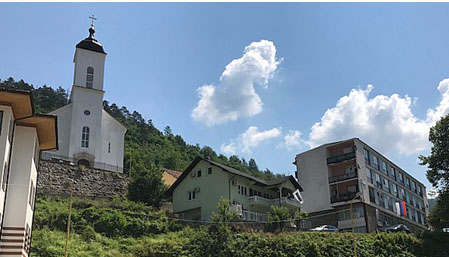
The Serb Orthodox Church in the Srebrenica town
There is a lot of evidence that proves the Serb Orthodox Church (SPC), in Serbia and “Republic of Srpska”, has supported aggression against Bosnia and Hercegovina. After the war, its activities are continued.
One older Bosniak widow is in a permanent battle with the Serb Orthodox Church –
“Like many Muslims in the hills of eastern Bosnia, she was ethnically cleansed from the village during the war in the early 1990s. Her husband was killed and she was made a refugee by ethnic Serb military aggression. When she returned to Konjević Polje in 2000, she was outraged to find the church had been built on her land”.[5]
The church is still standing in her backyard.
“At Budak, near the Memorial Centre of Potočari, a newly-built Orthodox Church was opened. It is located on the private land of Dušan Ilić, but is close to the mass graves from which exterminated remains of nearly 300 victims of the Genocide in Srebrenica were exhumed”.[6]
United Nations Security Council Resolution 819 demanded that “all parties and others concerned treat Srebrenica and its surrounding as a safe area which should be free from any armed attack or any other hostile act”.[7]
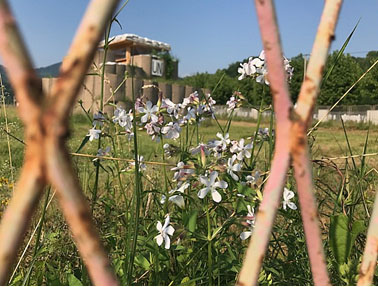
“Neutral” observers of Genocide: United Nation Protection Forces (UNPROFOR)
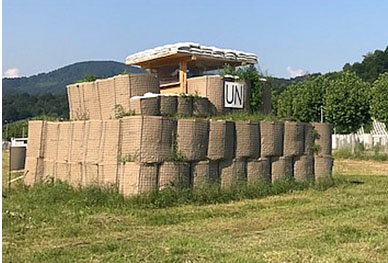
“SAFE AREA OF SREBRENICA” fell without a single shot fired by UNPROFOR
In May 1993, the UN Security Council established the International Criminal Tribunal for Yugoslavia (ICTY) at The Hague-Netherlands, to try those responsible for violations of international humanitarian law across the territory of the former Yugoslavia since 1991. The purpose of the tribunal was to bring justice to the victims of the conflict and deter future leaders from committing similar atrocities.
ICTY has since launched a website called “The Tribunal Remembers: The Srebrenica Genocide 1995-2015”, in memory of the Srebrenica genocide in 1995. The website was made available to the public four weeks ahead of the 20th anniversary of the genocide, on 11th July, 2015.
Over the years, ICTY had passed legally binding verdicts against those indicted for the genocide and other war related crimes in the “safe area of Srebrenica”:
– GENOCIDE
Vujadin Popović, Ljubisa Beara, Zdravko Tolimir
– AIDING and ABETTING GENOCIDE
Radoslav Krstić, Drago Nikolić
– CRIMES AGAINST HUMANITY
13 people convicted
– VIOLATIONS OF THE LAWS OR CUSTOMS OF WAR
10 people convicted[8]
“The former Bosnian Serb leader Radovan Karadžić, in the first instance verdict, has been found guilty of genocide over the 1995 massacre in Srebrenica and sentenced to 40 years in jail.”[9]
The trial of Ratko Mladić, former Bosnian Serb military leader, is in progress.
The trials in the ICTY, despite of the complexity attributed to the definition of genocide, have proved to be effective. Among others, the verdict for genocide was brought forward, as the primary act. The verdict of genocide committed by General Radislav Krstić, 2. August 2001, was the first conviction for genocide on European soil since the Holocaust.
The said judgment for genocide, along with the sentencing of General Krstić are of large importance, primarily for the following reasons:
- The judgments negated speculations about whether genocide was or was not carried out in BiH
- The penalties imposed should meet requirements of special and general prevention, which to the world made clear that the effecting of genocide anywhere in the world will not be tolerated and will be prosecuted and adequately sanctioned, especially in light of the establishment of a permanent ICC.
- Sentencing of General Krstić proved to be of primary importance for the BiH against Serbia and Montenegro lawsuit that was brought before the International Court of Justice in The Hague, as it served as evidence that genocide was carried out.
Apart from that, the judgment of Krstić, Tolimir, Beara and Popović further point to the fact that these crimes cannot be committed by a few individuals (which apparently can be done by reducing such crimes to the individual criminal responsibility of specific, smaller number of offenders), but it is an organized crime, which for example in Srebrenica, according to some sources, involved tens of thousands of people”.[10]
On 26th February 2007, the International Court of Justice in The Hague issued a Verdict on the BiH case against Serbia and Montenegro for violating the Prevention and Punishment of the Crime of Genocide, which ended the fourteen-year dispute.
The verdict found (relevant facts):
- Serbia violated the obligation to prevent genocide in accordance with the Convention on the Prevention and Punishment of the Crime of Genocide in connection with the events that took place in Srebrenica in July 1995.
- Serbia failed to fulfil its obligation under the provisional measures ordered by Court on 8 April and 13 September 1993. In the present case by failing to take all measures at its disposal to prevent the Srebrenica genocide in July 1995.
- The verdict found that Bosnian Serbs had devised and implemented genocide in and around of Srebrenica, and that the genocide was committed on behalf of the Republika Srpska authorities.[11]
Presiding Judge Theodor Meron in the Radoslav Krstic Apeal Judgement, 19 April 2004:
…This is crime against all of humankind, it’s harm being felt not only by the group targeted for destruction, but by all of humanity…[12]
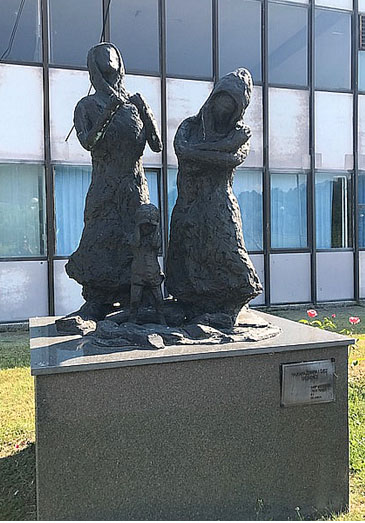
“Frozen Tears”, Women of Srebrenica, Memorial Centre-Potočari
Sculptor: Truus Menger-Oversteegen
It is difficult to the nation who bears the burden of genocide and whose leaders do not even recognise it and ask for forgiveness. If not for the victims and their families, at least for future generations from its own nation.
Mick Maslic,
Australia, July 2017.
———————————————————————————————————————————–
[1] Gregory H. Stanton, The 8 Stages of Genocide Briefing Paper, Yale Program in Genocide Studies, 1998, p. 4
[3] In Serb mythology the event that preceded “ The First Serb Uprising” against the
Ottoman Turks (1804 – 1813)
[4] Serb General Ratko Mladić, ‘General Ratko Mladic in Srebrenica, july 1995’, YouTube video, 12:00, posted by SokolfromRussia, posted on 3 May 2015, https://www.youtube.com/watch?v=ubmD6B3Vk5M
[5] ‘Bosnian widow in church battle’, BBC News, 27 August 2007, http://news.bbc.co.uk/2/hi/europe/6960579.stm
[6] ‘Otvorena pravoslavna crka iznad Potočara’, Al Jazeera Balkans, 14 September 2014, http://balkans.aljazeera.net/vijesti/otvorena-pravoslavna-crkva-iznad-potocara
[7] United Nations Security Council, ‘Resolution 819’, 16 April 1993, https://documents-dds-ny.un.org/doc/UNDOC/GEN/N93/221/90/IMG/N9322190.pdf?OpenElement
[8] United Nations International Criminal Tribunal for the former Yugoslavia, ‘ICTY Remembers: The Srebrenica Genocide 1995-2015’, http://www.icty.org/specials/srebrenica20/?q=srebrenica20/
[9] Julian Borgen and Owen Bowcott, ‘Radovan Karadžić sentenced to 40 years for Srebrenica genocide’, The Guardian, 24 March 2016, https://www.theguardian.com/world/2016/mar/24/radovan-karadzic-criminally-responsible-for-genocide-at-srebenica
[10] Zarije Seizović and Goran Simić, ‘The jurisdiction of the International Criminal Tribunal for the crime of genocide as a factor of general prevention’, Dijalog, 2013, p. 119.
[11] J. Morgan-Foster and Pierre-Oliver Saovie, ‘World Court finds Serbia Responsible for Breaches of Genocide Convention, but Not Liable for Committing Genocide’, American Society of International Law, 11(9), 3 April 2007.
[12] United Nations International Criminal Tribunal for the former Yugoslavia, ‘ICTY Remembers: The Srebrenica Genocide 1995-2015’, Video, 13:50, http://www.icty.org/specials/srebrenica20/?q=srebrenica20/


 ENG
ENG





























